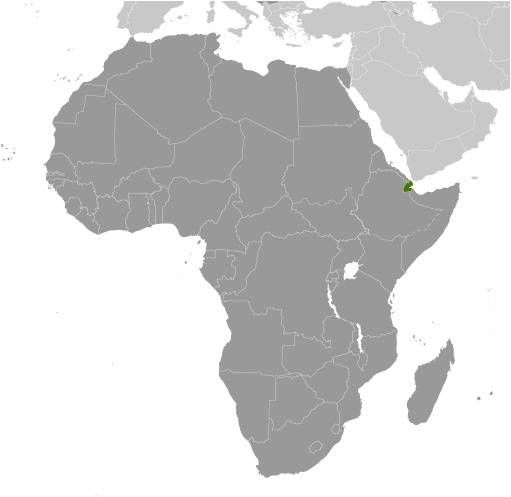Country Summary




Introduction
Background
The French Territory of the Afars and the Issas became Djibouti in 1977. The government holds longstanding ties to France, which maintains a military presence in the country, as does the US, Japan, Italy, Germany, Spain, and China.
Geography
Area
total: 23,200 sq km
land: 23,180 sq km
water: 20 sq km
Climate
desert; torrid, dry
Natural resources
potential geothermal power, gold, clay, granite, limestone, marble, salt, diatomite, gypsum, pumice, petroleum
People and Society
Population
957,273 (2022 est.)
Ethnic groups
Somali 60%, Afar 35%, other 5% (mostly Yemeni Arab, also French, Ethiopian, and Italian)
Languages
French (official), Arabic (official), Somali, Afar
Religions
Sunni Muslim 94% (nearly all Djiboutians), other 6% (mainly foreign-born residents - Shia Muslim, Christian, Hindu, Jewish, Baha'i, and atheist)
Population growth rate
1.97% (2022 est.)
Government
Government type
presidential republic
Capital
name: Djibouti
Executive branch
chief of state: President Ismail Omar GUELLEH (since 8 May 1999)
head of government: Prime Minister Abdoulkader Kamil MOHAMED (since 1 April 2013)
Legislative branch
description: unicameral National Assembly or Assemblee Nationale, formerly the Chamber of Deputies (65 seats; members directly elected in multi-seat constituencies by party-list proportional representation vote; members serve 5-year terms)
Economy
Economic overview
food import-dependent Horn of Africa economy driven by various national military bases and port-based trade; fairly resilient from COVID-19 disruptions; major re-exporter; increasing Ethiopian and Chinese trade relations; investing in infrastructure
Real GDP (purchasing power parity)
$5.42 billion (2020 est.)
Real GDP per capita
$5,500 (2020 est.)
Agricultural products
vegetables, milk, beef, camel milk, lemons, limes, goat meat, mutton, beans, tomatoes
Industries
construction, agricultural processing, shipping
Exports
$5.15 billion (2019 est.)
Exports - partners
Saudi Arabia 42%, India 15%, China 14%, Egypt 5%, South Korea 5% (2019)
Exports - commodities
various animals, chlorides, dried legumes, industrial fatty acids/oils, coffee, chickpeas (2019)
Imports
$4.76 billion (2019 est.)
Imports - partners
China 43%, United Arab Emirates 15%, India 7%, Turkey 5% (2019)
Imports - commodities
refined petroleum, fertilizers, iron sheeting, cars, palm oil (2019)
Exchange rates
Djiboutian francs (DJF) per US dollar -
Page last updated: Wednesday, June 15, 2022
